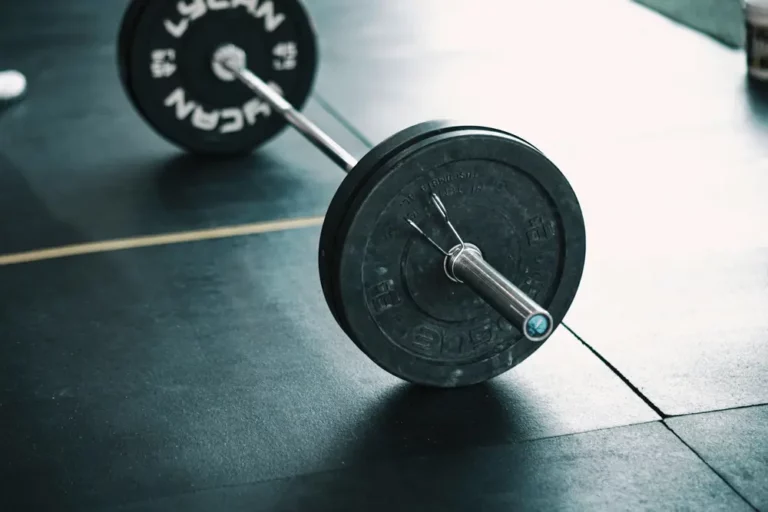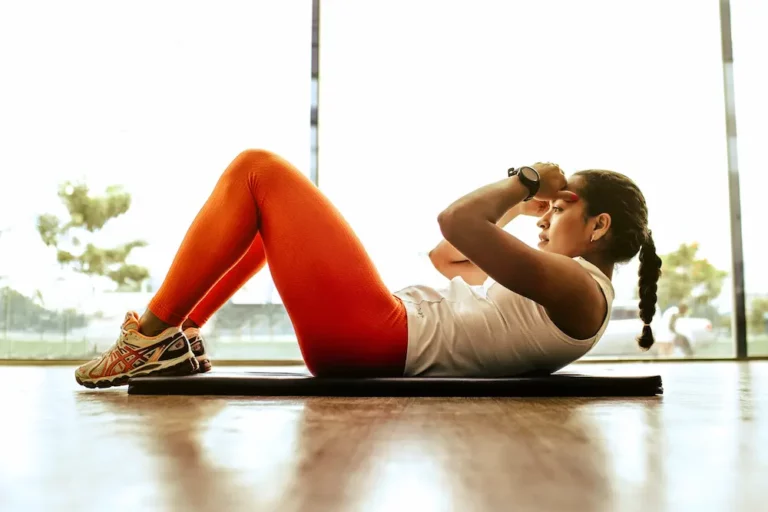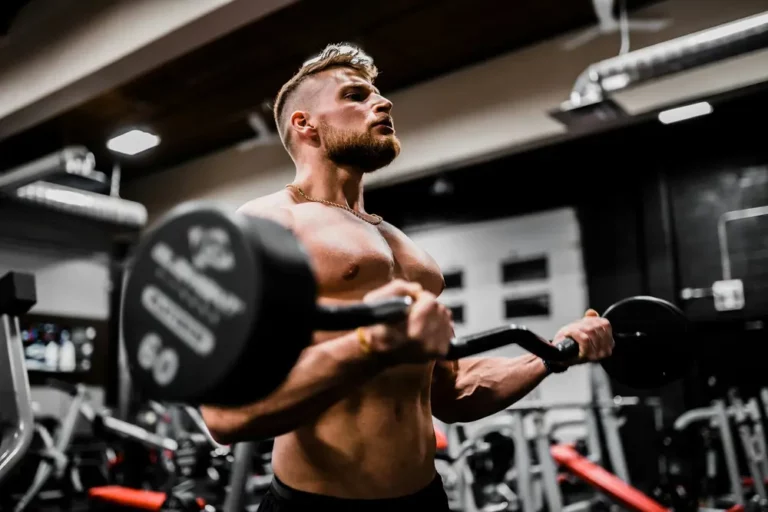Maximize Upper Body Strength with a Bent Arm Barbell Pullover Routine
I’ve always been on the lookout for exercises that really target those hard-to-reach muscles. That’s when I stumbled upon the bent arm barbell pullover. It’s not just any exercise; it’s a game-changer for those looking to isolate and sculpt their lats.
The beauty of the bent arm barbell pullover lies in its versatility. Whether you’re aiming to emphasize your lats or chest, this exercise has got you covered. But what really piqued my interest was how the focus muscle can shift based on the nuances of the movement – from the way you stretch to your hand position.
And let’s not forget, it’s crucial to listen to your body while performing this exercise. Experiencing shoulder pain? It’s a sign to pause and reassess. This little nugget of wisdom has saved me more than once during my workouts.
What Is Bent Arm Barbell Pullover?
I’ve found the bent arm barbell pullover to be one of those exercises that doesn’t get nearly enough credit. It’s a powerhouse of a workout that targets some of the most challenging muscles to engage—particularly the latissimus dorsi, or lats for short. What sets the bent arm variation apart is, of course, the position of the arms throughout the movement. Unlike its straight arm cousin, this version requires you to maintain a bent arm position, which fundamentally changes the dynamics of the exercise.
When I’m doing the bent arm barbell pullover, I start by lying flat on my back on a bench, holding a barbell with my hands slightly wider than shoulder-width apart. Then, keeping my arms bent, I slowly lower the barbell behind my head in an arc-like motion until I feel a deep stretch in my lats and chest. It’s crucial at this point not to let the weight dictate the movement but rather to control the descent with strength and precision. After reaching the stretch’s apex, I raise the barbell back to the starting position, using my lats to power the movement. This arc is what really activates those target muscles, drawing from the strength of the lats akin to how one performs pulldowns.
The focus muscle really depends on a few factors, such as how you position your hands and hips and even what body parts you’re consciously engaging at the top of the movement. It’s a delicate balance where a slight alteration in technique can shift the emphasis from the chest to the lats or vice versa. That’s why I always pay close attention to my body throughout the exercise and make adjustments as needed.
Equipment Required
For the bent arm barbell pullover, the equipment needed is fairly straightforward yet essential for performing the exercise correctly. At the core, you need:
- A barbell: This is the main piece of equipment for the exercise. I typically start with a lighter weight to ensure my form is spot-on before gradually increasing the weight as my strength improves.
- A flat bench: This supports your back and allows for a full range of motion during the exercise. I’ve tried both, lying along the bench with my torso perpendicular to its length and lying flat on the bench. Both positions have their merits, but I personally prefer lying on the bench as it feels more stable for me.
With just these two pieces of equipment, you can execute an exercise that targets hard-to-reach muscles effectively. It’s the simplicity and effectiveness of the bent-arm barbell pullover that makes it such an appealing option for my workout routine. Whether I’m aiming to enhance my lats or just looking for a good stretch, it’s become a go-to movement in my arsenal.
Targeted Muscles in Bent Arm Barbell Pullover
Primary Muscles Worked
In my journey to sculpt a well-defined back and chest, I’ve found the bent arm barbell pullover to be a staple in my routine. It’s a unique exercise that effectively targets several major muscle groups. The latissimus dorsi, or lats, are the primary focus. These large muscles on the back are key to achieving that sought-after V-shape. They play a crucial role in extending, medially rotating, and adducting the upper arm.
But it’s not just about the lats. The exercise also places significant tension on the pectoralis major muscles or chest muscles. This includes both the upper chest, near the clavicle, and the lower chest, around the sternal area. Each action of the pullover stimulates these areas slightly differently, making it a versatile addition to chest and back days.
Synergist and Stabilizer Muscles
While the lats and chest muscles steal the show, it’s important not to overlook the supporting cast that makes the bent arm barbell pullover so effective. The teres major muscle, akin to a smaller cousin of the lats, assists in the movement, aiding in the stabilization of the shoulder joint.
Then there are the triceps, specifically the long head, which get a good stretch and contraction throughout the exercise, acting as synergists. The posterior deltoids and rhomboids also contribute, enhancing shoulder stability and upper back strength.
To round it all up, the pullover doesn’t neglect the core. The rectus abdominis, obliques, and even the serratus anterior engage in stabilizing my body on the bench, ensuring a solid foundation for the movement and adding a sneaky abdominal work into the mix.
Incorporating the bent arm barbell pullover into my routine has been a game-changer, thanks to its comprehensive engagement of these primary and synergistic muscles.
Benefits of the Bent Arm Barbell Pullover
The bent-arm barbell pullover is more than just an exercise; it’s a comprehensive movement that offers a plethora of benefits. If you’re pondering whether to add this potent exercise to your routine, let’s dive into some of the compelling advantages it brings to the table.
Improvement in Upper Body Strength
One of the most significant benefits I’ve noticed is the remarkable improvement in upper body strength. The bent-arm barbell pullover is not a one-trick pony; it targets multiple muscle groups simultaneously. Whether you’re aiming to enhance your lats, chest, or even arm strength, this exercise can be a game-changer.
Especially the engagement of the latissimus dorsi and pectoralis major muscles contributes to a robust upper-body foundation. These muscles are crucial for various daily activities and other exercises. Furthermore, the involvement of auxiliary muscles like the teres major and triceps means you’re getting a comprehensive upper body workout, leading to balanced muscle development and increased overall strength.
Enhancing Shoulder Flexibility and Posture
Another advantage that shouldn’t be overlooked is the enhancement of shoulder flexibility and posture. The unique motion of the bent arm barbell pullover stretches the shoulders and chest, promoting flexibility in these areas. Improved flexibility in the shoulders can lead to better performance in other exercises and reduce the risk of injuries.
Moreover, by strengthening the back muscles, this exercise helps in maintaining an upright posture. In today’s world, where many of us find ourselves hunched over computers for hours, incorporating exercises that improve posture is more important than ever. The bent arm barbell pullover aids in counteracting the common tendency to slouch, encouraging a healthier spine alignment and a more confident stance.
Performing the Bent Arm Barbell Pullover
When I first attempted the bent arm barbell pullover, I found it to be an enlightening experience that significantly improved my upper body strength and muscle coordination. Let’s dive deeper into how you can perform this exercise effectively.
Step-by-Step Instructions
Before starting, I make sure I’ve selected an appropriate weight. Too much weight can compromise form and not enough won’t challenge my muscles adequately.
- Positioning: I sit at the edge of a flat bench, holding the barbell with an overhand grip. I lay back slowly, positioning my shoulders on the bench while keeping my feet flat on the ground. I raise my hips slightly to create a stable, straight line from my shoulders to my knees.
- Starting Posture: With my arms fully extended, I hold the barbell over my chest, ensuring my grip is a bit wider than shoulder-width. It’s crucial my elbows are slightly bent to avoid strain.
- The Movement: I inhale deeply and, maintaining the bend in my elbows, slowly lower the barbell back and over my head. The motion is controlled, ensuring I don’t compromise my form or put undue stress on my shoulders.
- Finishing the Move: I pull the barbell back to the starting position above my chest as I exhale. Throughout this step, I make sure to keep my hips elevated and my core engaged for stability.
- Repetition: I typically perform 3-4 sets of 8-12 reps each, depending on my fitness goals and current strength level. It’s essential not to rush through the motions but to focus on muscle engagement and proper form.
Form and Visual Guide
For me, maintaining proper form during the bent arm barbell pullover is non-negotiable. Not only does it prevent injuries, but it also ensures I’m effectively targeting the right muscle groups. Here are some key aspects of my form that I pay close attention to:
- Elbow Position: Keeping my elbows slightly bent and fixed in position helps me isolate my lats and chest muscles without putting undue stress on my joints.
- Hip Placement: I make sure my hips are slightly raised throughout the exercise to maintain tension across my abs and lower back, enhancing the workout’s effectiveness.
- Breathing: Breathing correctly, by inhaling as I lower the weight and exhaling as I lift it, helps me maintain rhythm and increase muscle engagement.
- Pace: I’ve learned the hard way that rushing through the reps doesn’t do me any favors. A slow, controlled pace maximizes muscle recruitment and growth.
By focusing on these key form points, I’ve been able to make the most out of my bent arm barbell pullover sessions. Remember, proper form not only maximizes benefits but also minimizes the risk of injury, making it crucial for an effective and safe workout.
Common Mistakes and Tips for Effective Execution
When diving into the world of bent arm barbell pullovers, it’s easy to get lost in the excitement and, unfortunately, equally simple to fall into some common pitfalls. I’ve discovered through trial and error and much research that avoiding these mistakes can significantly improve your performance and results.
Avoiding Incorrect Form and Adjustments
A major issue I’ve encountered, and one that seems to plague many, is maintaining proper form throughout the exercise. It’s crucial to avoid using too much weight, as this often leads to arching the back or raising the hips, diverting the focus from the targeted muscles—primarily the lats—and increasing the risk of injury. An equally common mistake is not keeping the feet flat on the floor. This might seem minor but lifting your feet can lead to lower back strain or worse. Speed is another factor; performing the movement too quickly lessens muscle fiber recruitment, which in turn diminishes muscle growth despite being able to do more reps. And let’s not forget about the elbows. Flaring them out takes the emphasis off the lats and could risk shoulder injury.
Recommendations for Optimal Results
To achieve the best outcomes from the bent arm barbell pullover, I’ve found that starting light and focusing on form before progressively increasing weight is the way to go. This method ensures that the muscles are being engaged properly without overloading them prematurely. It’s also beneficial to perform the exercise as part of an upper body workout in moderate rep ranges, such as 8-12 reps per set. Doing so has allowed me to really focus on the targeted muscles and ensure they’re being worked effectively.
Incorporating Bent Arm Barbell Pullovers Into Your Routine
When I decided to integrate the bent arm barbell pullover into my exercise regimen, I had to consider a few key factors to ensure I was maximizing the benefits without overtraining. Here’s how I found the right balance.
Frequency and Repetition Recommendations
Initially, I wasn’t sure how often to do bent arm barbell pullovers or how many reps constituted a good set. After some research and personal experimentation, I’ve settled on a sweet spot that works for me.
I incorporate this exercise twice a week into my workout schedule. This frequency allows enough recovery time for my muscles, ensuring they’re primed for growth without the risk of overuse injuries. It’s common advice, but truly, listening to your body is paramount; if I feel like I’m not fully recovered, I’ll ease off on the intensity or skip it until I feel better.
For repetitions, I aim for a range of 8-12 reps per set, completing 3-4 sets each session. The key here is to focus on form rather than lifting the heaviest weight possible. Pulling the weight up with control and focusing on the stretch and contraction of my lats and pecs have brought me significant improvements in muscle definition and strength.
Combining with Complementary Exercises
To get the most out of my workouts, I’ve found that coupling bent arm barbell pullovers with exercises that target related muscle groups enhances overall upper body strength and aesthetics. Here’s my go-to combo:
- Dumbbell Rows: Targeting my lats directly complements the work done by the pullovers.
- Chest Press: Since pullovers also engage the pectoral muscles, incorporating chest presses helps in developing uniform chest strength and size.
- Face Pulls: I include these to balance the pushing and pulling movements, keeping my shoulder joints healthy.
I also sprinkle in some shoulder-stabilizing exercises like lateral raises to ensure that my deltoids aren’t left lagging behind. This combination keeps the workout varied and engaging, preventing boredom and ensuring comprehensive upper body development.
By integrating bent arm barbell pullovers into my routine with these complementary exercises, I’ve noticed improvements not just in muscle size but also in functional strength, which is a win in my book.
Conclusion
I’ve found that incorporating bent arm barbell pullovers into my routine has been a game changer for my upper body development. Sticking to twice a week with a focus on form has not only improved my muscle definition but also my overall strength. It’s been crucial to listen to my body to avoid pushing too hard and risking injury. Pairing pullovers with exercises like Dumbbell Rows and Chest Press has rounded out my workouts, ensuring I’m hitting all the key muscle groups. I’m excited to see where this combination takes my fitness journey next. Remember, it’s all about balance and consistency.
FAQ – Frequently Asked Questions
Are barbell pullovers effective?
Yes, barbell pullovers are highly effective. They engage the entire core by resisting extension forces on the spine, similar to ab rollouts or long-lever planks.
What muscles do the bar pullover work?
The ez-bar pullover mainly works the lats and secondarily targets the chest, shoulders, abs, and triceps.
Where should you feel pullovers?
You should feel pullovers in your chest (pectorals) and upper back (latissimus dorsi). Proper form should also engage your serratus anterior and core muscles as stabilizers.







